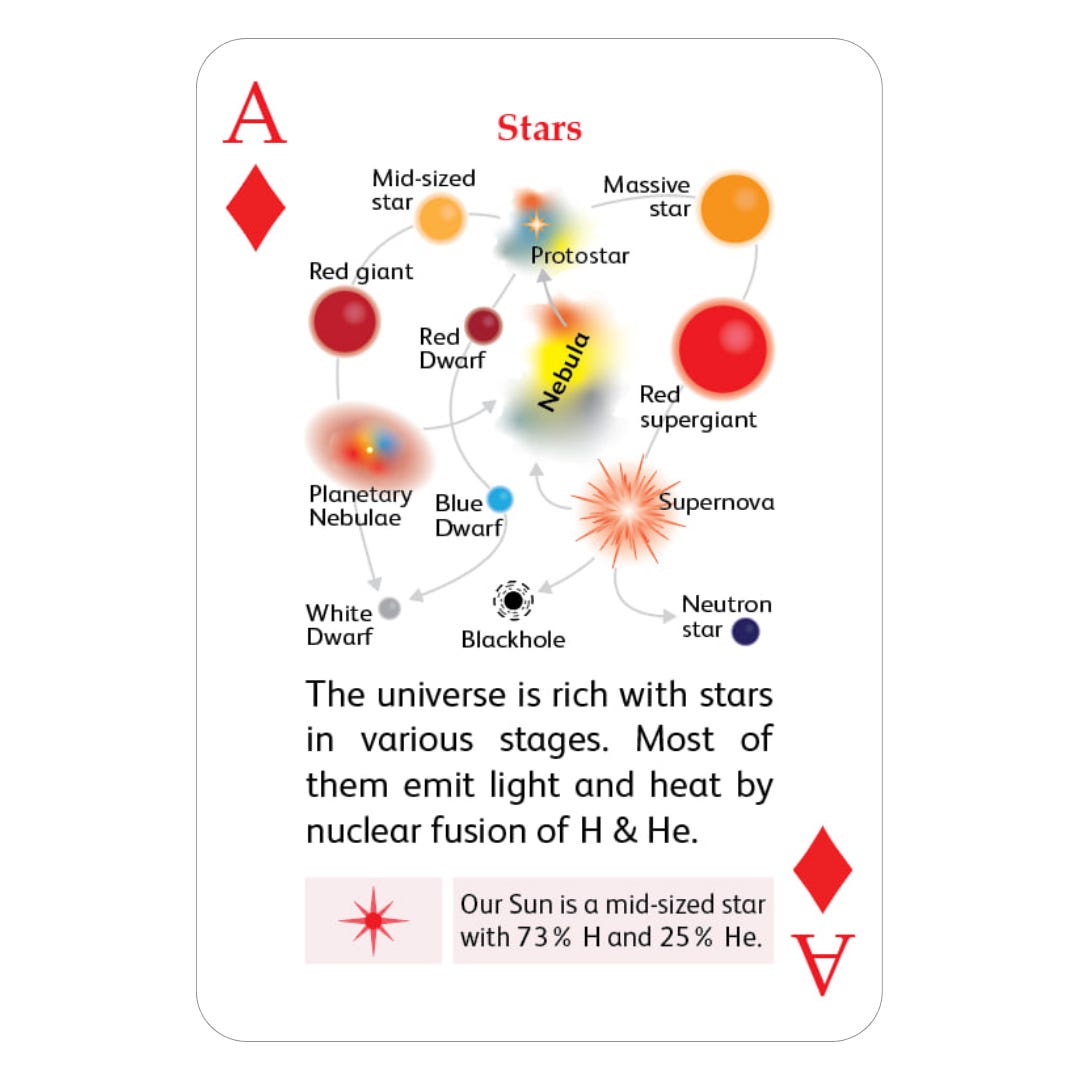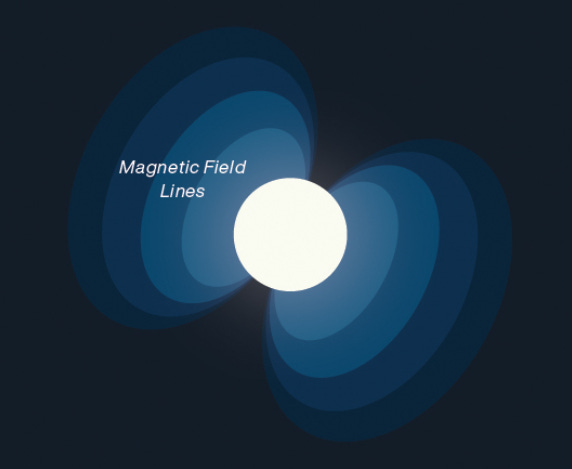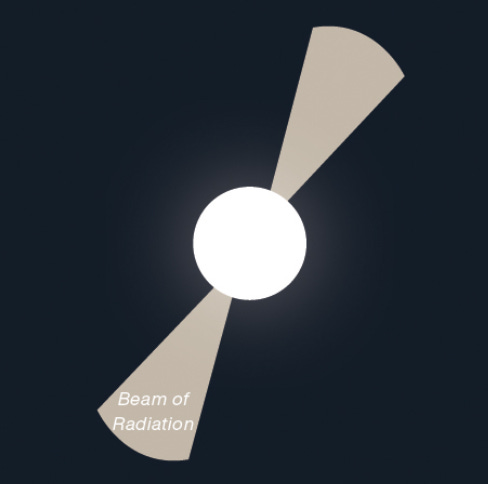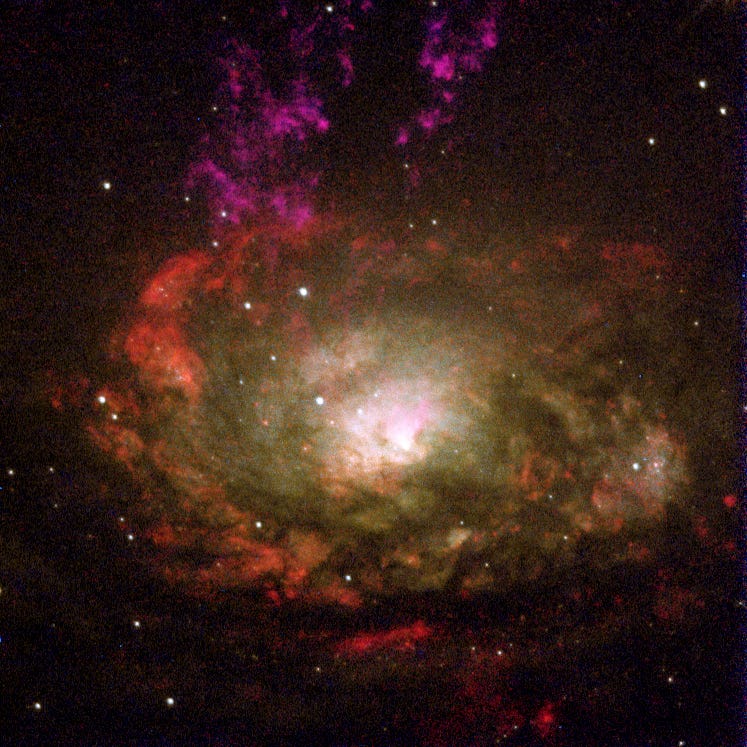Quasars, Pulsars, Magnetars & Blazars: What are they?
Terms we hear often, right?
A glimpse of what is coming on 21st Feb: The Space Deck
Not sure about you but I got fascinated by these terms when I first heard them during childhood. (Even I don’t know exactly why!?) In this article, we will explore what are these objects starting with the basics.
Collapse of a star
In the last phase of a massive star’s life, the star undergoes a phenomena called a gravitational collapse. This occurs when the star’s internal pressure is insufficient to resist the star’s own gravity. The result of this is a great reduction in the radius of the object without a change in mass. Now, if you recall the gravitational force exerted by an object is directly proportional to its mass and indirectly proportional to its radius. Hence, the collapse results in a great increase in the gravitational force exerted by the collapsed star.
Now, depending on the final state, it can be of two forms.
Neutron Star
This is a dense star after a massive star undergoes a gravitational collapse. Usually, this is a star having a radius on the order of 10 kilometers and a mass of about 1.4 times the mass of the sun. To give you a comparison, the resulting density is similar to what you would get if you compressed the entire Mount Everest to fit a tablespoon!
A neutron star with an extremely powerful magnetic field is called a Magnetar and a highly magnetized rotating neutron star that emits beams of electromagnetic radiation out of its magnetic poles is called Pulsar.
Black hole

Sometimes the star can get further compressed and the gravity increases so much that even light is not able to escape from this. Now, please note that this does not imply Black Holes suck everything. They behave similarly to objects having similar mass with the only difference being that since light cannot escape from it, it cannot be seen directly. Imagine a “dark” object in space whose effects can be felt to a great distance.
Accretion
Accretion is just an astrophysics term the accumulation of particles into a massive object by gravitationally attracting more matter, typically gaseous matter, into an accretion disk. The process by which a large object becomes larger.

Supermassive Black Hole
A supermassive black hole (SMBH) is the most extensive category of black hole, possessing a mass ranging from hundreds of thousands to billions of times that of the Sun. Observations suggest that nearly every sizable galaxy harbors a supermassive black hole at its core. As an example, our Milky Way galaxy houses a supermassive black hole in its center, identified as the radio source Sagittarius A*.

Combing it all together
If the Supermassive Black hole at the center of the galaxy actively, emits a significant amount of energy across the electromagnetic spectrum, with characteristics indicating that the luminosity is not produced by stars — then that galaxy is called an Active Galaxy. And the nucleus/center is called the Active Galactic Nucleus.
Active Galaxies are of two types: Seyfert galaxies and Quasars.
Seyfert Galaxy: The center is bright but not too bright. You can see the boundaries of the galaxy clearly without being blinded by the light from the center.
Quasars: The center is super bright. So bright that it looks like a star, hence the name Quasi-Star (Quasar). Meaning star-like. If you google images of Quasars, you will see bright stars-like images. When the energetic jet of the active galactic nucleus is directed toward our planet Earth, it is named a Blazar.

I believe this took you on a quick journey through some of the most fascinating objects found in the universe. The entire universe is filled with many more mysteries and surprising objects, many of which have not yet been studied and discovered. Next Sunday, we will cover another interesting topic related to rockets and space.







Nice concise summary